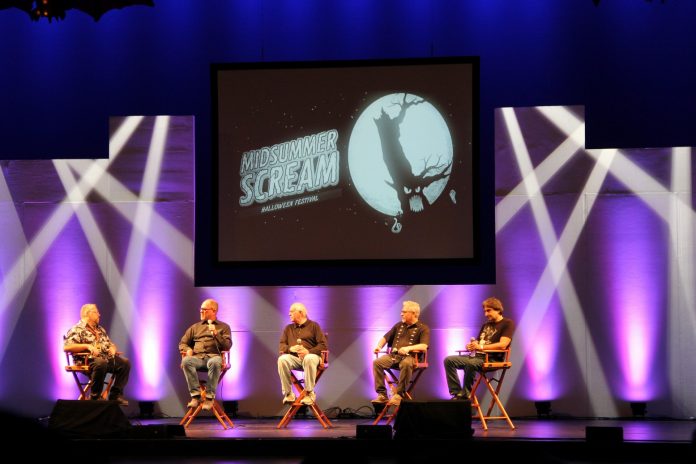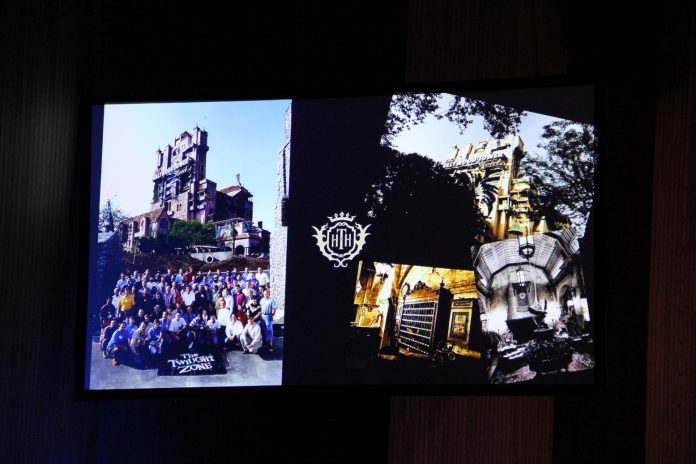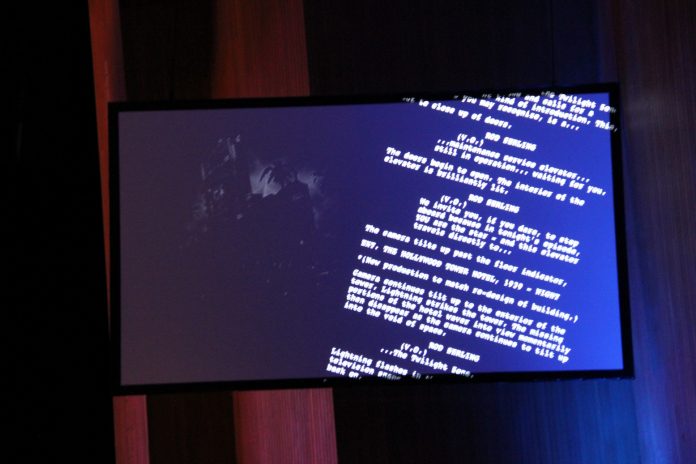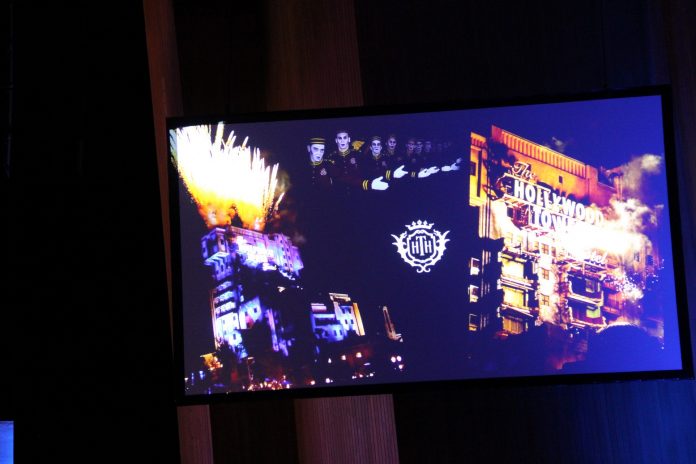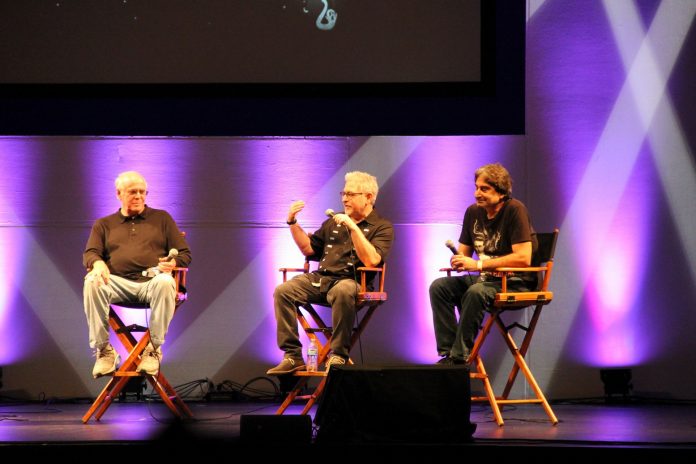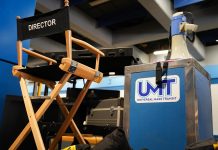Midsummer Scream, now in its second year, kicked off this weekend and had more than enough distractions to keep everyone busy, and barely walking the busy show floor. The major draw for some were the panels and they covered a wide variety of topics.
Kicking off the show, was a highly anticipated talk with some of the creators of The Twilight Zone: Tower of Terror. This was the first main show inside giant auditorium. As the show ran a tad late, everyone was waiting for it to begin. After the founding team of Midsummer Scream introduced themselves in a fantastic manner, the audience waited. Suddenly a lightning bolt flashed on the curtains and a very VERY familiar voice started repeating the show script for The Tower of Terror that we all knew too well.
Except it wasn’t. The script was for us. It was about Midsummer Scream and the panel we were about to see. But it was still voiced by Mark Silverman, the voice actor who lent his talent to filling in for the iconic Rod Serling of The Twilight Zone.
The curtains rose, some bats inflated at the top of the wall behind the stage, and they were introduced.
Normally we wouldn’t spend this long embellishing the beginning of a panel, but in this case, it was somewhat unique and had a very different kind of introduction.
The discussion itself was a great way to start off Midsummer Scream. Cory Sewelson, Eric Jacobson and Michael Sprout were there as well to discuss their experiences, alongside the aforementioned Mark Silverman.
Because, as they brought it up themselves, this was before an era of social media, instant photo sharing and blogs, so guests had no idea what was coming, but thankfully they did bring along some early slides that showed the construction of the gargantuan structure.
Early plans for the attraction discussed making a whole ghost themed land around the area, and even having a functioning hotel inside the facade. Both of those ideas failed for practical and thematic reasons. It was also wished that the building would have been front and center in the park, but because of the footprint needed, it would have been too massive to walk around, so instead it was moved to the Sunsent Blvd area that we all know. Even after moving it there, they tried for a 45 degree angle to try to make the view more appropriate, rather than a straight-on placement.
Mark Silverman had a really touching story about his auditioning experience for the attraction and there was no doubt he was a passionate Disneyland fan giving this his all. Beyond simply repeating his lines, he offhandedly mentioned preparing a Japanese translation for Tokyo’s eventual tower and spouted it off fluently.
The team also spent a while discussing how the building was essentially 3 different ride systems. One to lift the vehicle, the vehicle itself moving through the 5th dimension, and the finale elevator. It was also mentioned that it was Eisner’s idea for guests to see out of the building at some point during the ride, which required some refactoring of planning, but ultimately ended up as the right decision.
And while the team present for the panel were the core team for the Orlando placement, they had some insight into the other locations, mostly in California Adventure. Because they had a fixed spot for the attraction, and a fixed budget, there were tight constraints to work within. So somethings had to go, and the 5th dimension scene, which was the most common point of failure in Florida, ended up on the cutting room floor, but was replaced by the thermal image scene at the beginning of the ride in California. While it wasn’t discussed deeply, apparently a huge portion of the budget was saved on the facade of the building, allowing for more money to go for the interior of the attraction, for the show scenes itself.
As for Tokyo, they explained how Japan was unfamiliar with the ride itself, so Harrison Hightower had to be a fiction character created to explain the existence of a building on the 1901 American Waterfront, as opposed to a 1939 Hollywood hotel. Because the land was thematically different from the other placements of towers around the world, even if Japan had been familiar with the cigarette smoking narrator, it would have needed a radical change-up, regardless.
Rick West concluded the session by having the audience standup to show themselves to the team involved, demonstrating that all of us had been touched by the attraction they labored over 4 years to ultimately construct.
For more details on this panel, please check out the full presentation:


